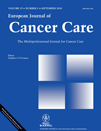Outcomes in percutaneous stenting of non-hepato-biliary/pancreatic malignant jaundice
No financial support or grants were required for this study.
Abstract
MELLER M.T., ARTS G.R.J. & DEAN J.R. (2010) European Journal of Cancer Care19, 664–668
Outcomes in percutaneous stenting of non-hepato-biliary/pancreatic malignant jaundice
The aim of this study is to review the practice and outcomes at our institution of percutaneous transhepatic placement of metallic biliary stents for non-hepato-biliary/pancreatic (non-HBP) malignant obstructive jaundice. A retrospective review was performed of the records of all patients undergoing transhepatic stenting for non-HBP malignant obstructive jaundice over a 7-year period. A total of 25 patients were successfully stented and linear regression analysis of a variety of demographic, clinical and laboratory markers against survival was performed. Survival after stenting varied from 1 to 1354 days (median 58, mean 152). An initial bilirubin level less than 300 µmol/L (P= 0.01) and a reduction of greater than 50% in bilirubin post stenting (P= 0.02) were strong predictors of improved survival. Older patients survived longer than younger ones (P < 0.01). There was a weak association of survival with an albumin >30 g/L (P= 0.06), but no statistically significant correlation with creatinine or haemoglobin levels or active tumour treatment after stenting. There were few major complications from the procedures. Transhepatic metallic biliary stenting for non-HBP malignant biliary obstruction is a safe and effective procedure, and with careful patient selection, significant periods of survival and palliation of jaundice can be achieved.




